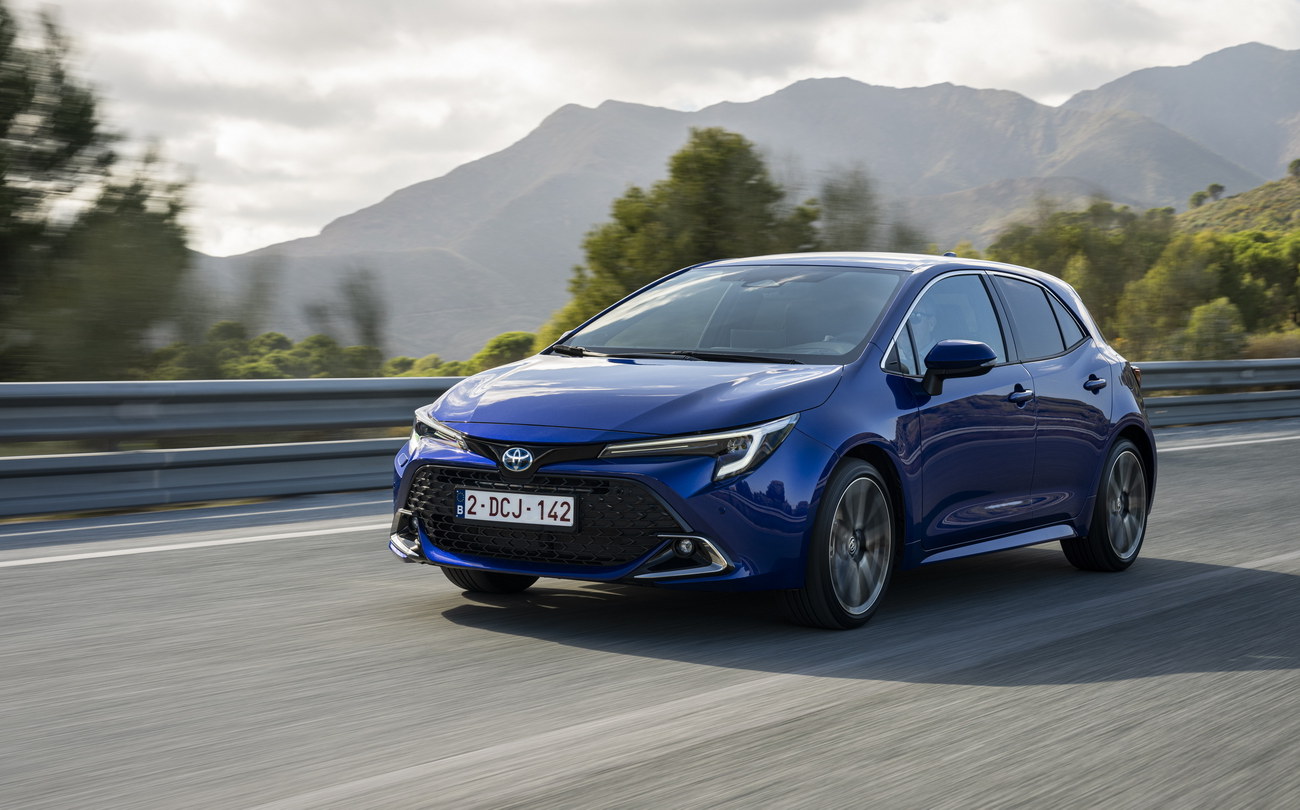Toyota Corolla Hybrid 2023 review: A sensible update for a sensible car
Built in Burnaston
Toyota has long had an image of quiet sensibleness about it. They used to be the sort of car bought by those who prioritise reliability above all else, and for whom excitement is anathema. That has begun to change, and not just in the fire-breathing GR models. Outgoing Toyota CEO Akio Toyoda (grandson of the company founder) is a car nut to his fingertips, and waged a long campaign to make his family company’s products more exciting to drive, and to look at.
The once-bland Corolla has been a major part of that plan, relaunched in 2019 with sharper styling and a more invigorating driving experience. Now, for 2023, it’s getting a facelift (of the most minor sort) and an upgrade to its hybrid powertrain. Does that make it a more interesting prospect still, or is Toyota once again playing it safe?
Exterior design and rivals
If you can line up the outgoing Corolla and the new side by side and spot all the differences, you’ll probably win a Toyota-branded anorak. The updated Corolla looks all-but identical to the outgoing one, with only the front bumper, the internal bits of the head- and tail-lights and the back bumper actually new. There are some updated alloy wheel designs, admittedly, and a couple of new paint options including the handsome new ‘Juniper Blue’ finish pictured here.
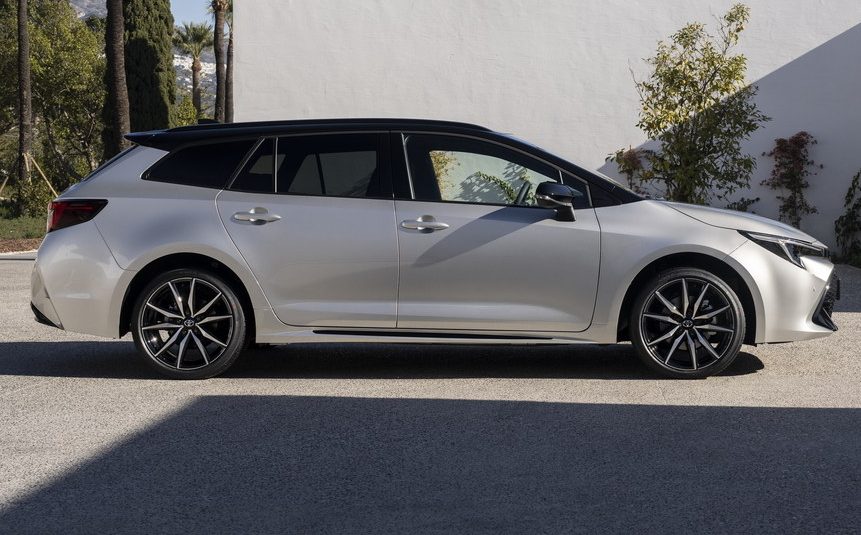
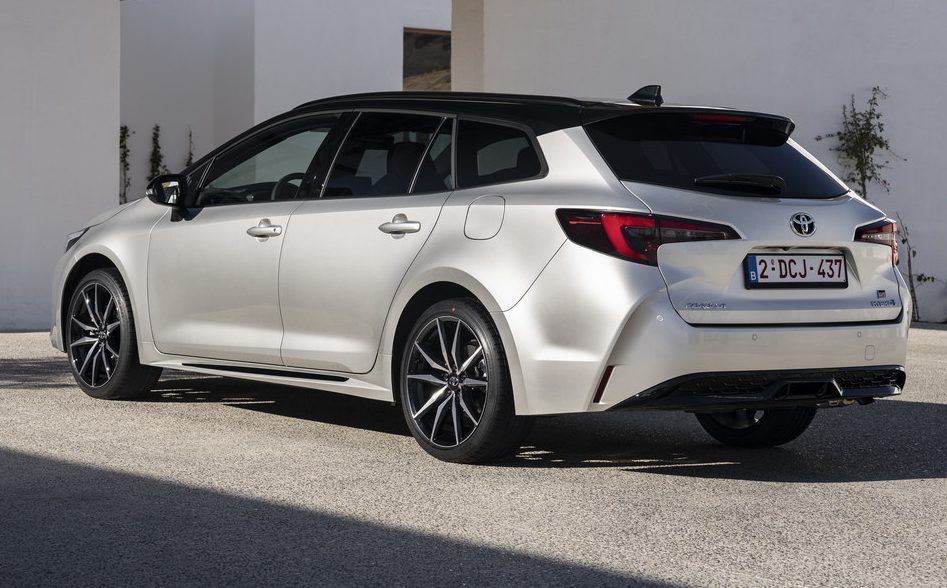
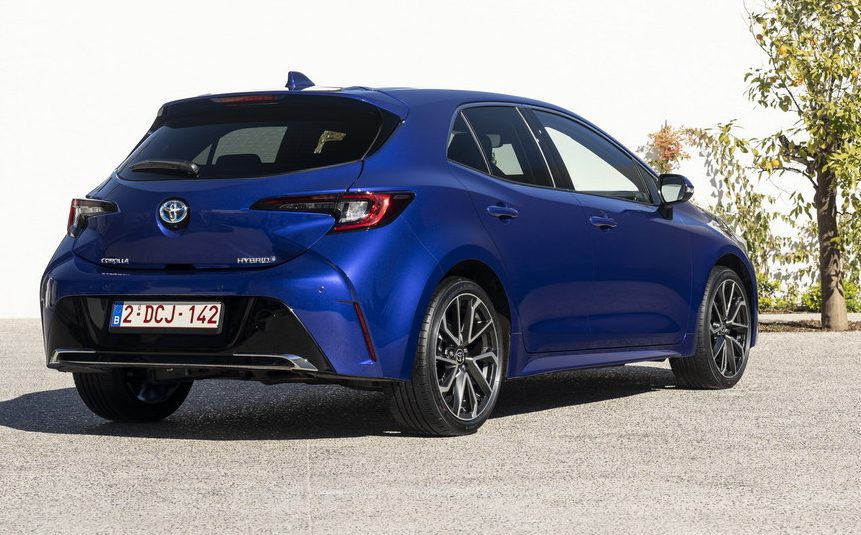
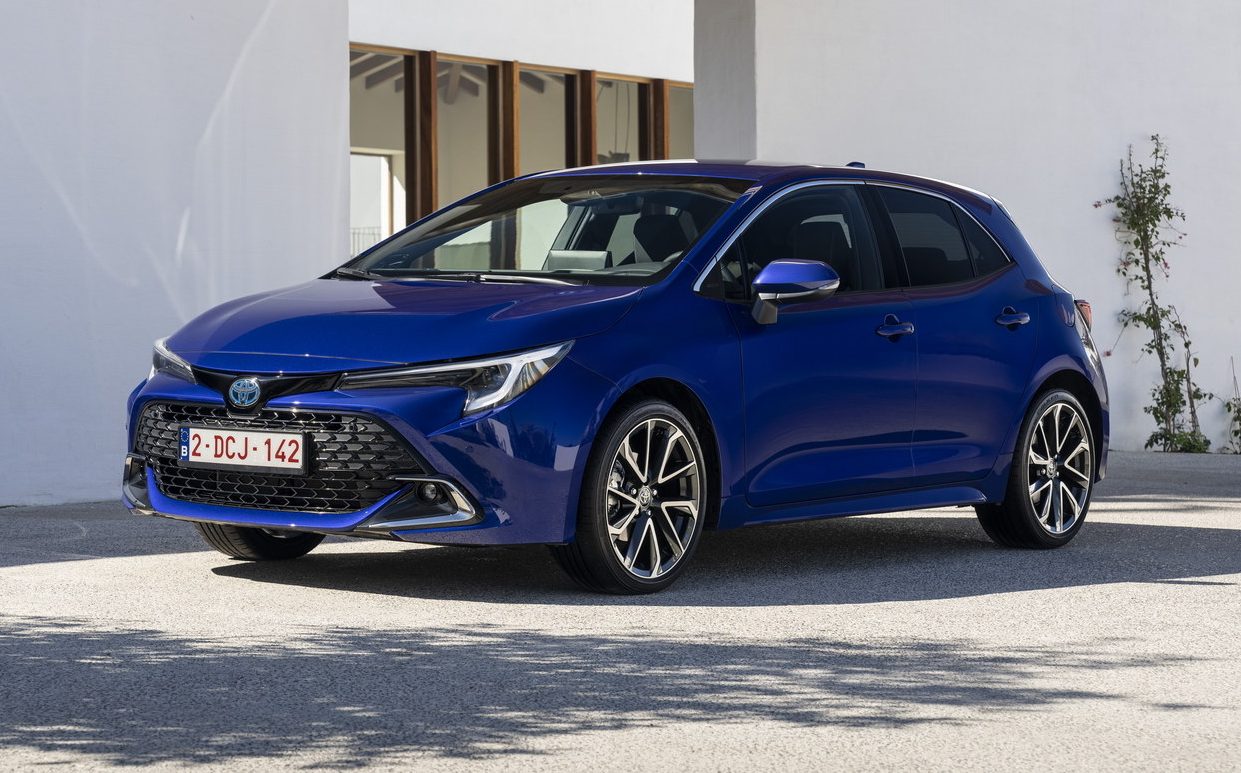
For all its familiarity. the Corolla remains a smart looking car. It can even look enticingly sporty at times, especially in estate form, and especially in the more overt GR Sport trim (not to be confused with the actual GR Corolla hot hatch that British buyers are still denied). The blandness of previous models has been thoroughly banished, and the Corolla is much the better for it.
Will that be enough to give the Corolla more kerbside and showroom appeal than the new Honda Civic, or the venerable Volkswagen Golf? Perhaps — impressive though the new Civic is, it is a very conservatively-styled car on the outside, while the droopy-nosed eighth-generation Golf is looking tired already, unless you get a sporty model such as the GTI.
Hyundai’s handsome i30 Fastback is arguably the Corolla’s sharpest looking rival, although it currently lacks any kind of hybrid or plug-in hybrid option, while the Skoda Octavia provides a strong contest, as not only is it quietly handsome on the outside, it’s significantly more spacious than the Corolla inside.
Interior and practicality
Toyota has made more meaningful changes to the Corolla’s interior, but those changes come under the heading of technology, so we’ll cover those below. Elsewhere, the overall shapes and styling are the same as before, and so too are the exceptional quality levels — the Corolla remains a car able to put much more expensive models to shame with its cabin quality.
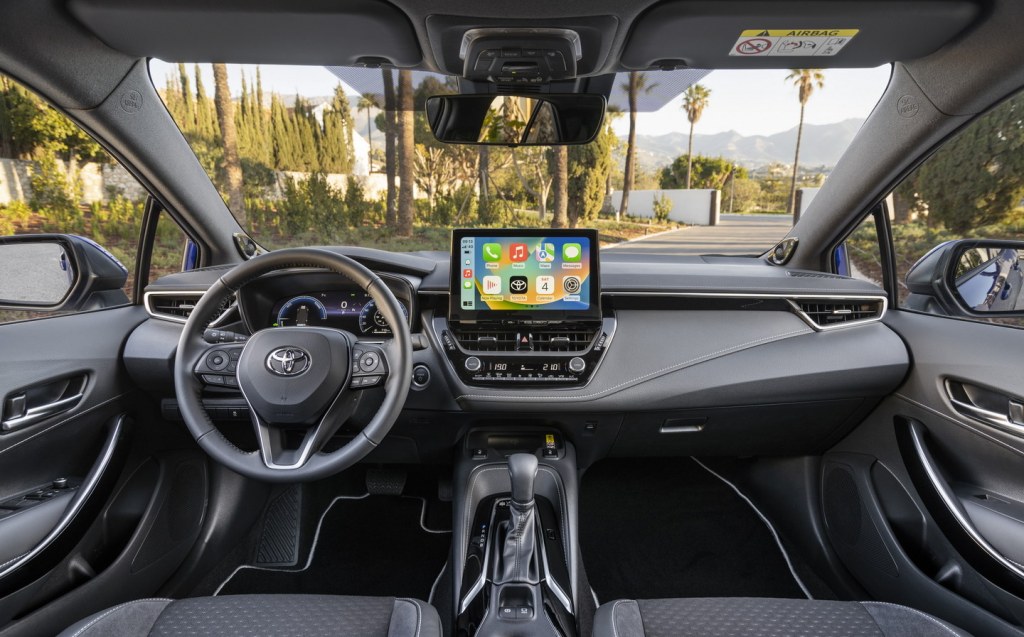
It’s far from the roomiest car around, though. While the front seats are very comfortable and supportive, and the driving position good, the high centre console and the way the dashboard design juts outward above your knees makes the car feel a touch cramped, especially if you’re tall.
There’s also a lack of storage space. The box under the front armrest, the door bins and the little shelf in front of the gear lever (which is optionally occupied by a wireless phone charger) are all a bit small, so there isn’t quite enough room for all your keys, wallets, water bottles and so on.
In the five-door hatchback there’s simply not enough legroom for one tall adult to sit behind another. If you’re going to accommodate anyone over the age of 13 in the back seats, the driver and front passenger are going to have to slide their seats forward. Headroom is also less than generous.



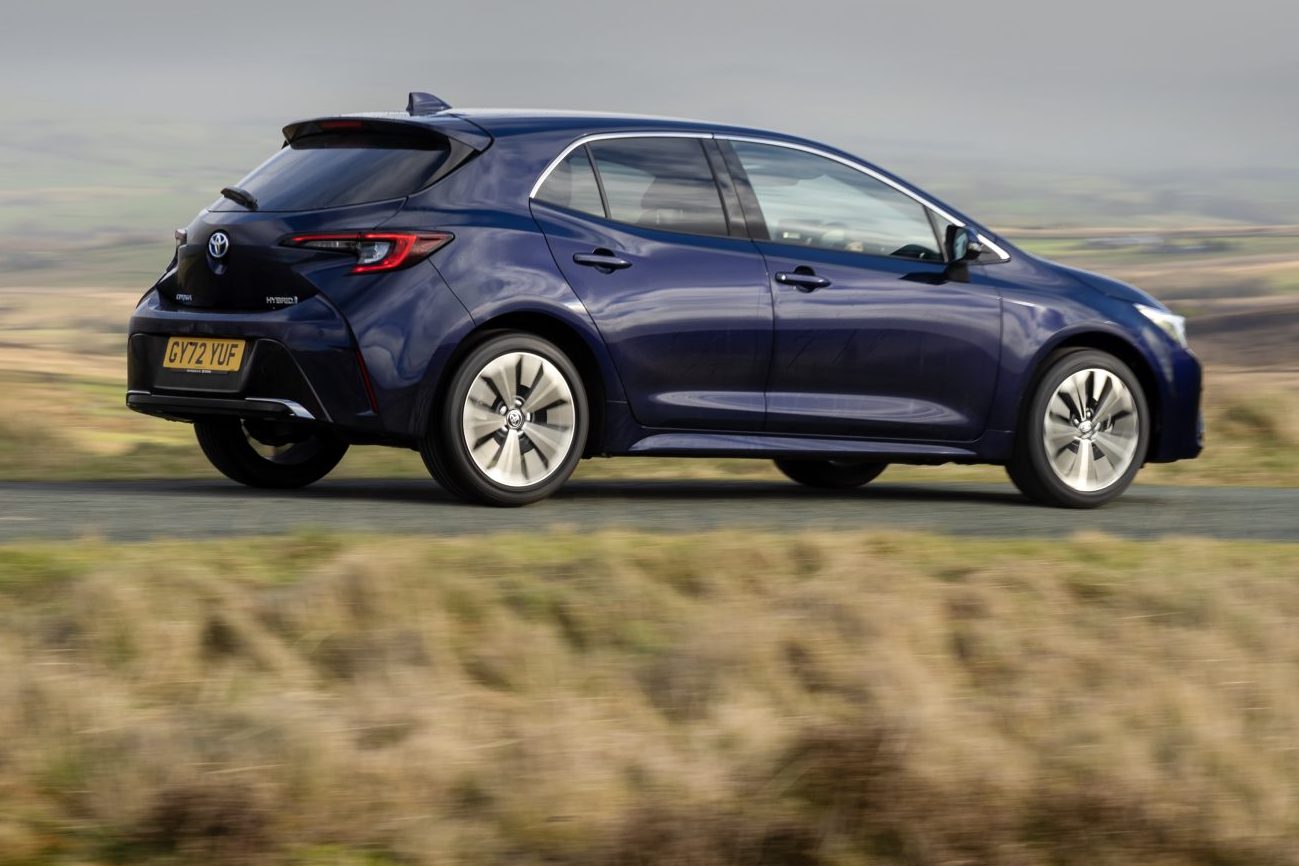
The boot isn’t much better. Even Toyota people will admit that the 361-litre boot is less than class leading, some 20 litres shy of the Golf’s and hundreds of litres smaller than a Skoda Octavia’s. The only upside is that the Toyota’s boot is roomier or at least as roomy as some plug-in hybrid rivals — such as the Vauxhall Astra.
You’d be much better off in the Corolla Touring Sports estate. This sits on a structure with the front and rear wheels pushed apart by 10cm and which offers rear space that, if not exactly generous, is at least adequate.



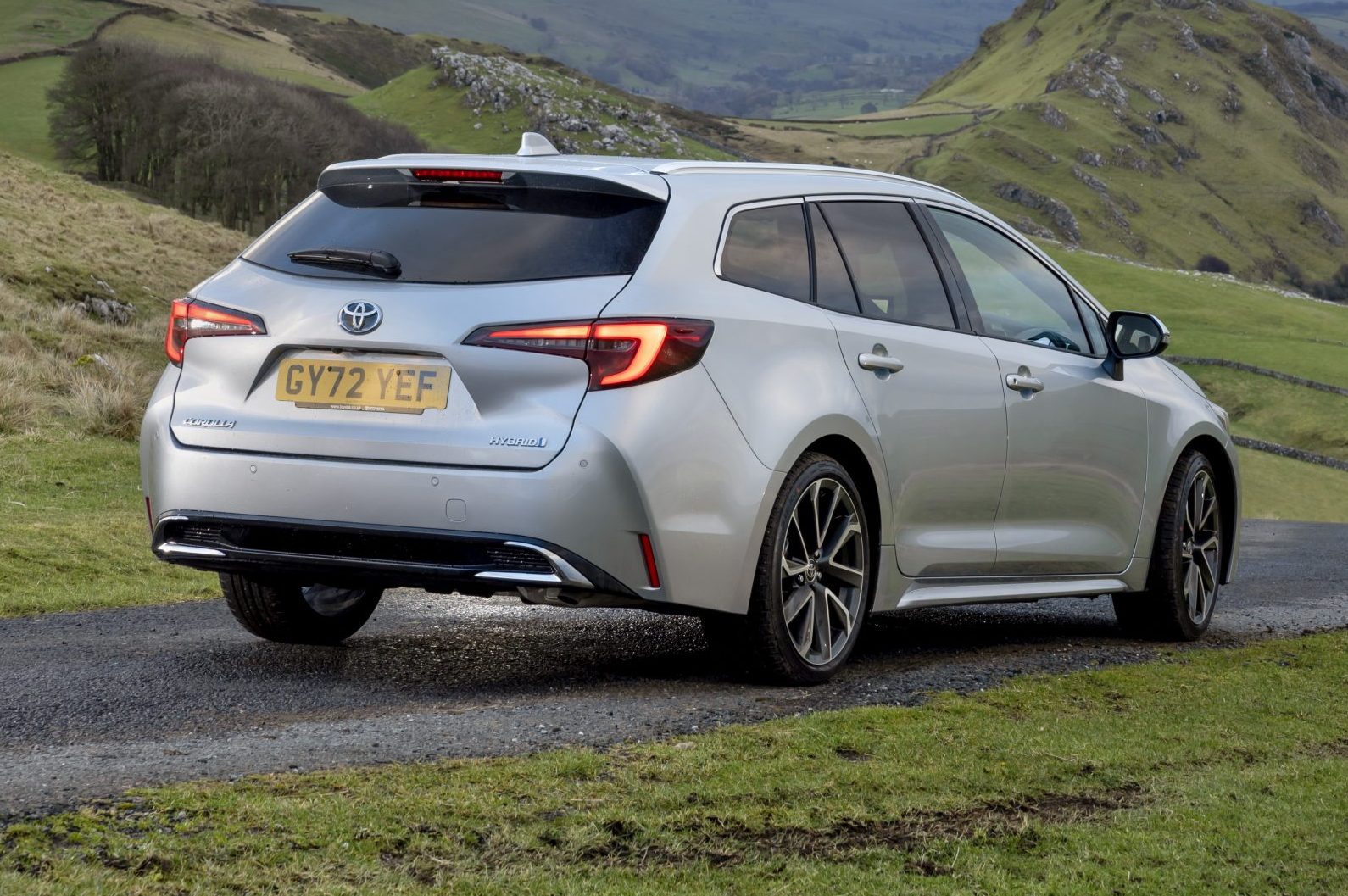
The Touring Sport’s boot is more useful, too — at 598 litres up to the luggage cover it’s not the biggest in the class, but it’s more than enough for most purposes. Fold the estate’s back seats flat (disappointingly, they only split 60:40, compared to the 40:20:40 of the Peugeot 308 SW) and you’ve got 1,606 litres of load space.
Technology and safety
The new 12.3in digital driver’s display is a welcome replacement for the previous mixed analogue and digital instrument panel, which looked tired and old even when it was new.

The new digital screen is much sharper, and while you’ll have to submit to a somewhat confusing settings menu to alter the layout, you can at least do so. The graphics look crisp, too.
A dramatic backlit side view of the Corolla pops up as you switch driving modes.
In the centre of the dash is a new 10.5in touchscreen infotainment system, which is a massive improvement on that of the outgoing Corolla.



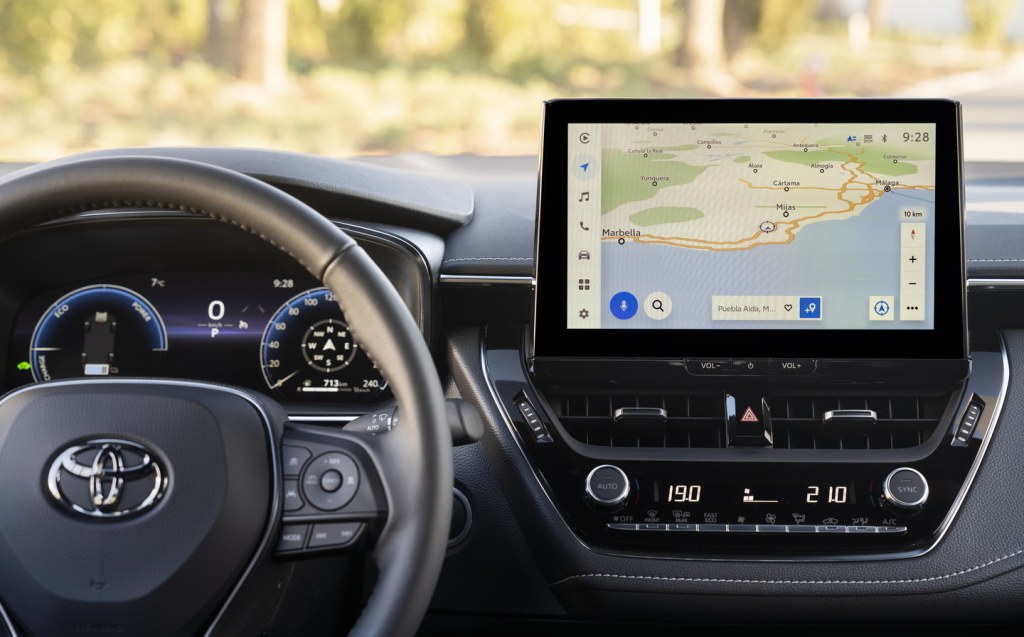
Its graphics are bang up to date, and its menu layout is significantly more simple and logical. Toyota has helpfully retained physical stereo volume buttons, as well as separate physical heating and ventilation controls, which makes life much easier and safer on the move.
The screen includes a cloud-based navigation system that can give you live traffic advice, but which can be a touch laggy and slip behind the physical position of the car if you’re in an area of low mobile reception.
The Corolla now has a built-in antenna for internet connectivity, though, which powers that cloud-based nav, and which is free to use for the first four years of ownership. It also enables connection to your mobile phone through an app, which allows you to monitor the car’s various functions, flash the lights in a busy car park so that you can find it and remotely start the climate control so that you can cool the car down, or defrost it, before leaving the house.
The app, called MyT, also includes hybrid driving tips for anyone new to part-battery driving.
The Corolla already had a full five-star rating from Euro NCAP when it comes to crash safety, but Toyota has updated and upgraded the electronic safety kit under the name T-Mate. That upgrade includes a new forward-facing camera and radar that are claimed to be more effective than before, and which give the Corolla standard-fit adaptive cruise control.
The camera also allows for a new system called Proactive Driving Assist (PDA) — while this has some familiar functions such as collision warnings, it also includes a new active braking system that automatically ramps up the amount of energy recovered back into the battery when you lift off the accelerator while approaching a corner or when there’s a slower moving car in front.
It’s not quite ‘one-pedal’ driving, but it’s quite a useful and intuitive system that is backed up by a new active steering assistant that can help you swerve away from danger in an extreme situation.
Optionally, you can fit your Corolla with a blind-spot monitor and a rear cross-traffic alert, and with these systems comes an extra one — Safe Exit Assist, which warns you if you’re about to open a door into the path of an oncoming cyclist. It only works on the front doors, though, and unlike Hyundai’s system — which will actually inhibit the door latch to stop you opening it — the Corolla just has a flashing light and a warning beep.
Performance, power output and acceleration
While the engine capacity of the basic 1.8-litre Corolla hybrid has remained the same, Toyota says that has been significantly upgraded as part of its new fifth-generation hybrid setup. For the 1.8, that means a new, more efficient, lithium-ion battery and a more powerful — 94bhp and 136lb ft of torque — electric motor, as well as a new computer brain.
The effect of all that is higher peak power — 138bhp now, up from 121bhp previously — and the same or better efficiency.
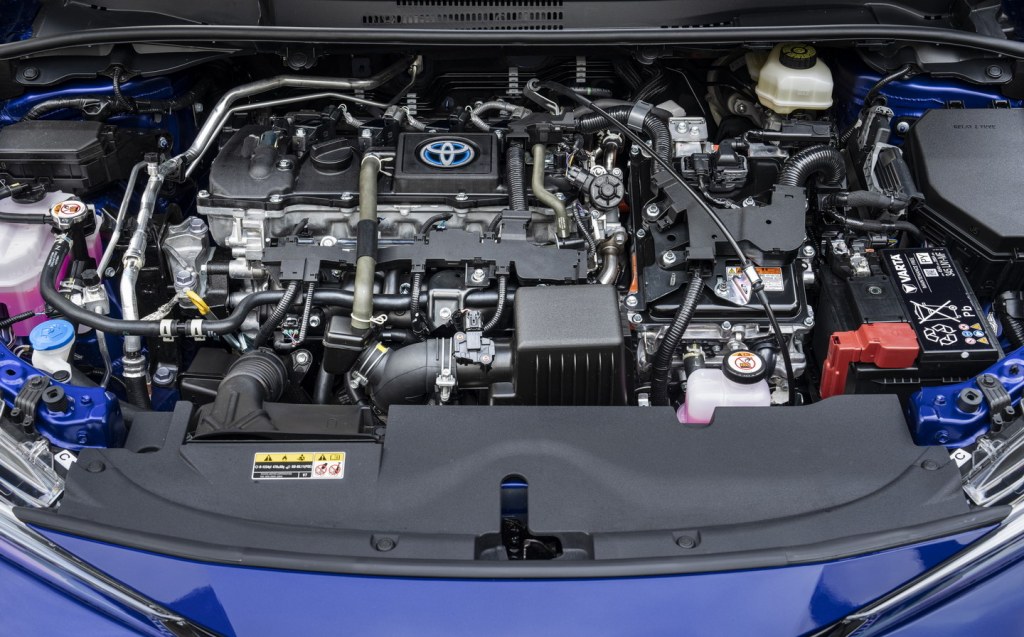
The 2-litre version also gets more power — it’s now up to 193bhp — and it’s slightly lighter than before as it has switched from a nickel metal hydride battery to a lithium-ion pack.
The 1.8 version arguably makes the 2-litre model redundant, as its extra power is really only noticeable under hard acceleration and that’s just not how you drive a Corolla hybrid. Much better to accelerate relatively gently, and let the improved electric motor do more of the work.
Do that and you’ll not only save fuel (55mpg is easy, beyond 60mpg is certainly possible), but you’ll also save your ears. Toyota has worked hard — and largely successfully — over the years to remove from its hybrids the high-revving noise when accelerating, and it’s certainly noticeable that the Corolla spends less time grinding away at high rpm to gather speed on the motorway. Long uphill runs are not its friend, but noise levels are rarely excessive in day-to-day driving.
The extra power on offer has given the Corolla swifter 0-62mph times — 9.1 seconds for the 1.8, 7.4 seconds for the 2-litre, but you’ll need to be in Sport mode if you want to feel the system at its highest performing. In the more likely event that you’re driving in Normal or Eco modes, the Corolla’s hybrid engine just rows along nicely, if unspectacularly.
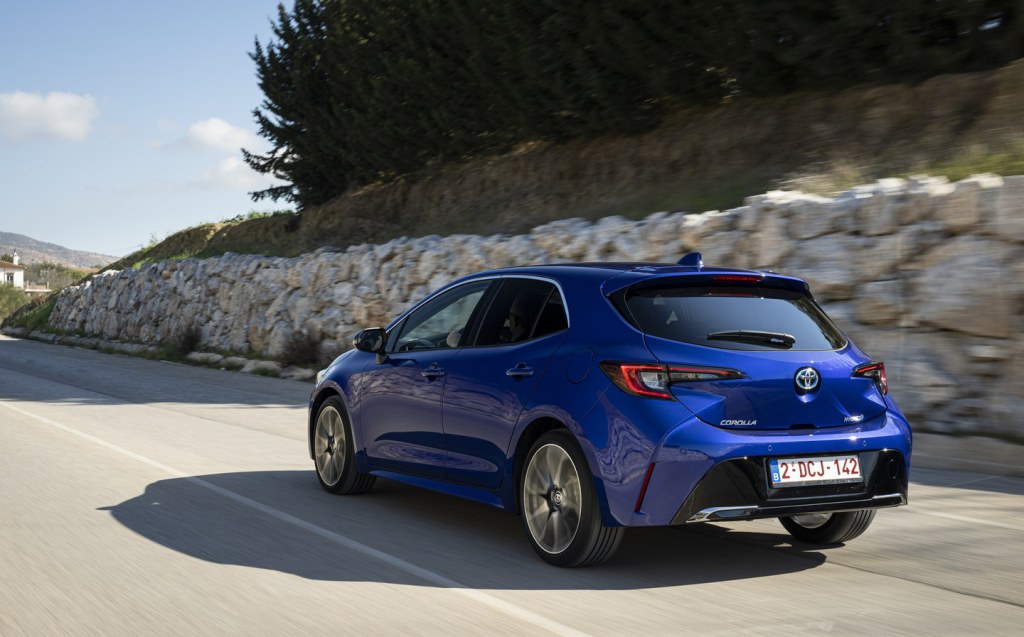
It’s certainly more noticeable how much more of the work is done by the electric motor than before. Not so long ago, you had to drive any Toyota hybrid with exceptional care to keep it running on electric power – as indicated by a little “EV” icon in the instruments. Now, you can accelerate quite decisively, and get well above 30mph before the petrol engine wakes up.
Toyota reckons that as much as 80 per cent of urban journeys in a Corolla can be done on just electric power, which is impressive if it can be replicated (we scored an apparent 50 per cent electric ratio on our mixed country road, motorway and town drive if the dashboard display is to be believed).
Ride and handling
In 2019, the Corolla was almost shocking in how nice it was to drive. Previous generations had been pretty forgettable, but with this 12th generation, suddenly there was sharp steering and a willing, engaging chassis. That carries forward to the updated model.
Comfort is still clearly more of a priority than excitement. The Corolla rides firmly, but with a well-damped sense of comfort. It only gets harsh if you spec it up with the 18in alloy wheels of the GR Sport models. The mid-spec 17in wheels are perfectly fine when it comes to comfort, although all Corolla models seem to suffer from too much tyre roar on coarse tarmac, which does spoil the refinement.
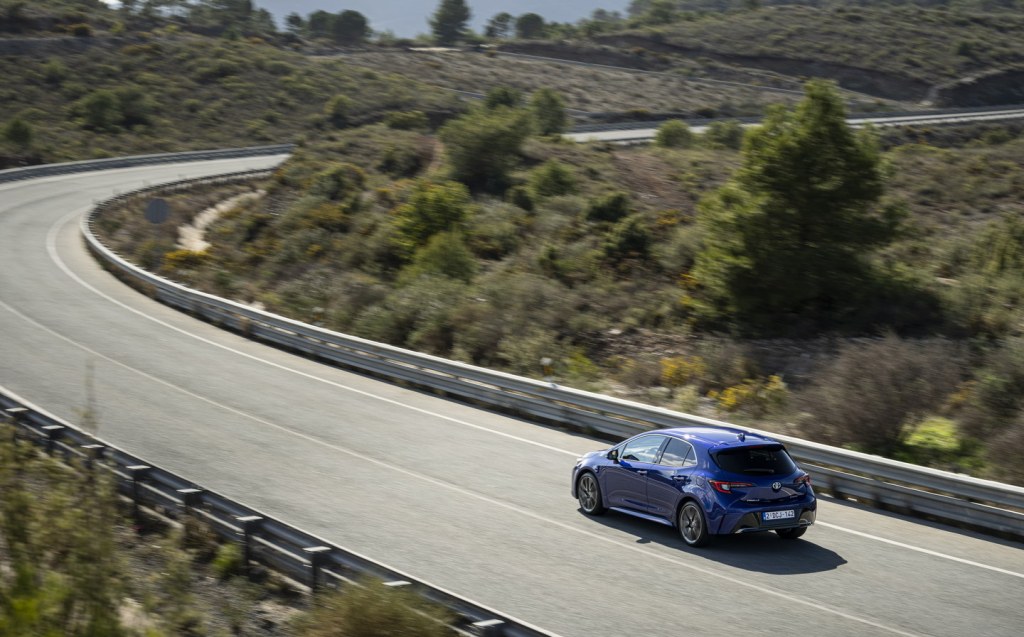
The steering is light but very fluid in feel and quite quick across its locks. The Corolla also seems to have plenty of front-end grip in reserve, so tightening corners hold no great fears.
It’s not as sharp in its steering feel as say a Ford Focus or a Mazda3, but it’s certainly satisfying, and on a twisty mountain road it’s easy to get the Corolla into a pleasant and enjoyable rhythm, sweeping from corner to corner.
That Proactive Driving Assist also helps, as the extra bit of regenerative braking when approaching a bend can help you better balance the car on corner entry, so it’s as much a driving aid as a safety and energy-saving feature.
Pricing and on-sale date
The Corolla is on sale now and prices start from £30,210 for an Icon spec hatchback with the 1.8-litre hybrid engine. Standard spec for Icon models includes 16in alloys, LED headlights, the 12.3in digital instrument screen, the 10.5in infotainment system with online connectivity and cloud-based navigation, a wireless phone charger, keyless entry and ignition, two-zone air conditioning, a reversing camera, front and rear parking sensors and heated front seats.
If you want the 2-litre engine in Icon form, that’ll cost you £31,955 while the Touring Sports estate costs £31,545 with the 1.8 engine, or £33,290 as a 2-litre, both in Icon spec.
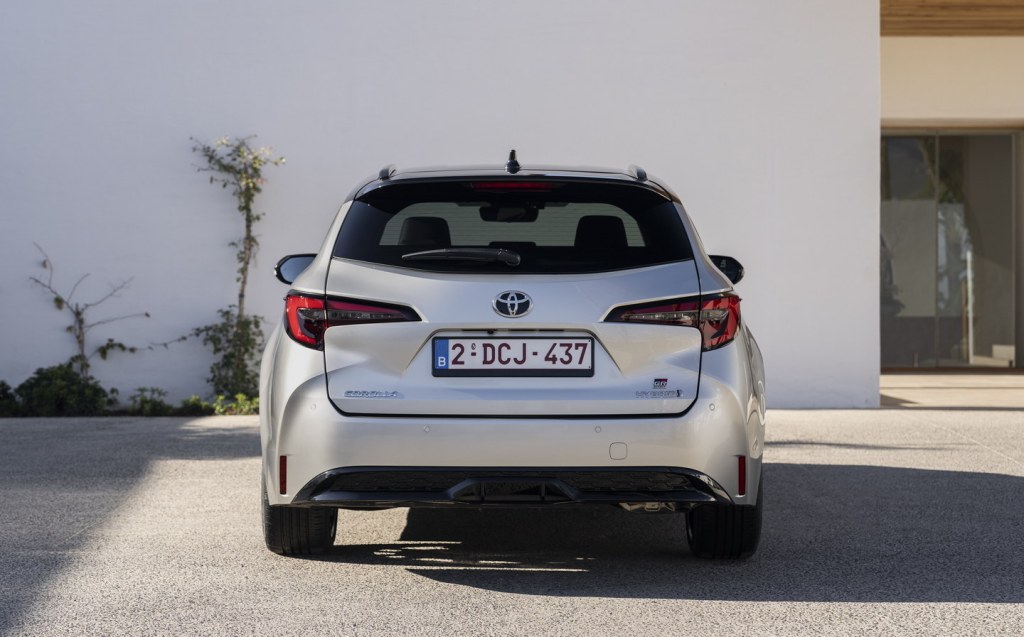
For £31,780 you can upgrade your 1.8 hatchback to Design spec, which comes with 17in machined-look alloy wheels, uprated LED headlights, rear privacy glass, auto-folding door mirrors, rain sensing wipers, ambient cabin lighting and a self-dimming rear-view mirror. A 2-litre hatch in Design spec costs £33,525, while the estate 1.8 Design is £33,115 and the 2-litre Design is £34,860.
Sporty-looking GR Sport spec starts from £32,990 for the 1.8 hatchback (£34,735 for the 2-litre and £34,705 or £36,450 for the 1.8 and 2-litre Touring Sports respectively). For that you get a chunky body kit with unique front and rear bumper designs, 18in dark grey alloys, black door mirror caps, red contrast stitching for the inside (along with embossed GR Sport logos) and the option of a contrast-colour roof.
At the top of the range is the Excel model, which will set you back £33,400 for the 1.8 hatch; £35,145 for the 2-litre hatch; £35,115 for the 1.8 estate; or £36,860 for the 2-litre estate. Standard Excel equipment includes 18in alloys, adaptive high-beam control, leather upholstery, a head-up display, blind-spot monitor, rear cross-traffic alert, safe exit assist and the option of a panoramic glass sunroof.
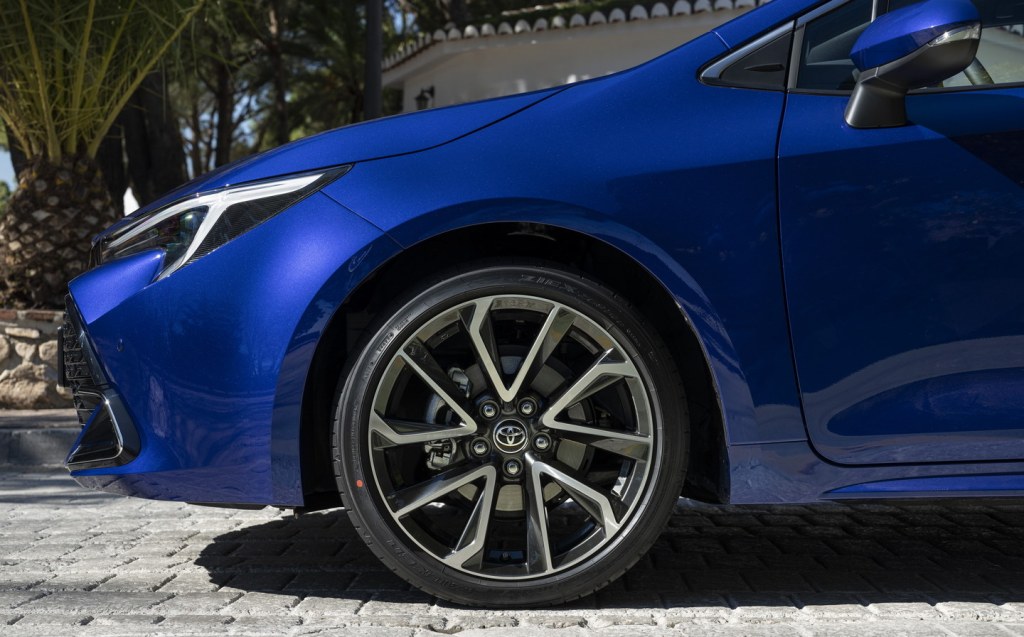
Verdict: Toyota Corolla Hybrid review
The fact that Toyota hasn’t changed the Corolla much is perhaps not very surprising. After all, in 2021, the 50 millionth Corolla was sold, underscoring the success of the model’s history of steady evolution rather than stunning revolution.
It remains a sensible choice, and the upgrades to the hybrid system are welcome both for the extra power and for the still-excellent economy. It’s no high-performance ball of fire but the Corolla is sharper and more rewarding to drive than you might expect. Given Toyota’s well-earned reputation for reliability, it should be a satisfying car to own in the long term.
Related articles
- After reading our review of the updated Toyota Corolla, you may want to read our review of the Toyota Prius
- Keen to go electric instead? Here are the top 10 longest-range electric cars
- Read how Jeremy Clarkson got on with the Honda Civic hybrid
Latest articles
- Bedeo Defender 110 2024 review: Does electric Landie with in-wheel motors make for a perfect off-roader?
- F1 2024 calendar and race reports: What time the next grand prix starts and what happened in the previous rounds
- BYD Seal U 2024 review: Chinese brand adds plug-in hybrid SUV to its electrified line-up
- New Mini John Cooper Works revs up for Nürburgring 24-hour race debut
- Ineos Grenadier Quartermaster 2024 review: British pick-up is a tough mudder but too flawed to be a real workhorse
- Mini Cooper SE 2024 review: All-new electric hatchback is playing to the crowd
- Jeep Wrangler 2024 review: Impressive off road but you’d still have to be a committed contrarian to buy one
- Around 500 Ford workers in UK could go on strike over cost-of-living pay dispute
- Durham solar car team to take part in 24-hour race with smart tyres and night-driving solution


